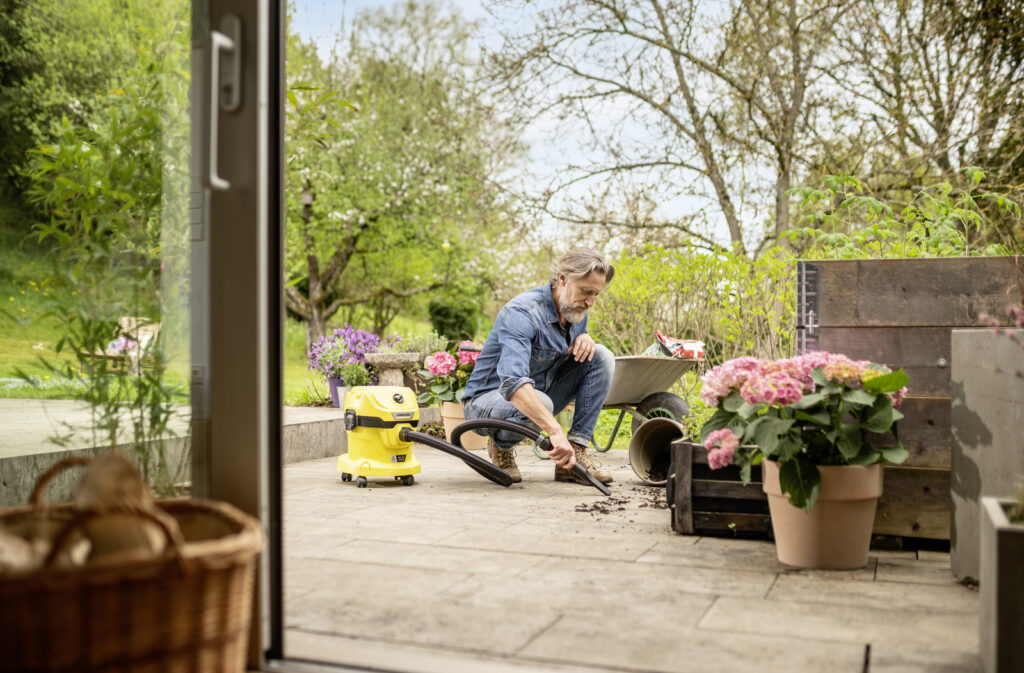When it comes to maintaining your air conditioning system, understanding the role of an A/C vacuum pump is crucial. This powerful tool is essential for removing moisture and contaminants from the refrigerant lines, ensuring your system runs efficiently. Without it, you risk damaging your A/C unit and compromising its performance.
Using an A/C vacuum pump isn’t just a maintenance step; it’s a necessity for anyone looking to extend the life of their cooling system. Whether you’re a DIY enthusiast or a professional technician, knowing how to properly use this equipment can save you time and money in the long run. Let’s dive into the importance of A/C vacuum pumps and how they can enhance your air conditioning experience.
Overview of A/C Vacuum Pumps
A/C vacuum pumps play a critical role in maintaining air conditioning systems. These tools effectively remove moisture and contaminants from refrigerant lines, facilitating efficient system operation and prolonging equipment life.
Purpose of A/C Vacuum Pumps
A/C vacuum pumps serve multiple purposes in air conditioning maintenance. They eliminate moisture, which can cause freezing and ice formations. They remove air and non-condensable gases that can hinder refrigerant efficiency. They also create a deep vacuum for testing system integrity, ensuring leak-free operation. Utilizing an A/C vacuum pump promotes optimal performance and reduces the risk of costly repairs.
Types of A/C Vacuum Pumps
A variety of A/C vacuum pumps exist, each catering to specific needs.
- Single-Stage Pumps: Ideal for light-duty applications, these pumps effectively remove moisture and air from small systems, featuring simpler designs and lower costs.
- Two-Stage Pumps: Optimal for heavy-duty use, two-stage pumps achieve deeper vacuums faster, making them suitable for larger A/C systems and refrigeration units.
- Electric Pumps: Offering portability and ease of use, electric pumps are popular among DIY enthusiasts and professionals alike. They require less maintenance and often include built-in gauges for monitoring.
- Manual Pumps: Cost-effective and straightforward, manual pumps rely on user effort to create a vacuum and are best for basic applications.
Understanding the purpose and types of A/C vacuum pumps allows you to make informed choices, enhancing both performance and reliability in air conditioning systems.
Features to Consider
When selecting an A/C vacuum pump, several key features significantly influence performance and usability. Prioritizing these features enhances the effectiveness and longevity of your air conditioning system.
Pump Capacity
Pump capacity, measured in CFM (cubic feet per minute), determines how quickly the pump can remove air and moisture. Look for a model with a CFM rating suitable for your application. Smaller systems typically require lower CFM values, while larger systems benefit from higher ratings. A higher capacity pump reduces evacuation time, making it efficient for both professionals and DIY enthusiasts.
Noise Level
Noise level affects user comfort and job satisfaction. Opt for a vacuum pump with noise ratings below 70 decibels for quieter operation. Lower noise levels contribute to a more pleasant working environment, especially during extended use. Many modern models incorporate quieter designs, ensuring minimal sound disruption.
Durability and Build Quality
Durability and build quality play crucial roles in the pump’s lifespan and reliability. Select pumps made from high-quality materials, such as aluminum or heavy-duty metal, to withstand rigorous use. Check for features like rubber feet and protective casings, which enhance stability and reduce vibration. High-quality manufacturing ensures that the pump functions effectively under various conditions, offering peace of mind during operation.
Popular A/C Vacuum Pumps on the Market
Several A/C vacuum pumps stand out for their efficiency and reliability. Below are two highly regarded options that serve a variety of needs.
Product 1: Robinair 15300
- Type: Two-stage vacuum pump
- CFM: 3.0 CFM
- Purpose: Ideal for automotive and residential applications
- Features: Includes an oil sight glass, an automatic shutoff, and a lightweight aluminum housing
- Durability: Designed for long-term use with a thermally protected motor
- Noise Level: Operates quietly, enhancing user comfort during use
Product 2: Tacklife PAVT2A
- Type: Single-stage vacuum pump
- CFM: 4.0 CFM
- Purpose: Suitable for HVAC systems and refrigeration
- Features: Comes with a 1/4″ and 3/8″ fittings that enhance compatibility and efficiency
- Durability: Constructed with high-quality materials for long-lasting performance
- Noise Level: Features a low-noise design, making it a great choice for residential settings
How to Use an A/C Vacuum Pump
Using an A/C vacuum pump requires careful preparation and attention to detail. Proper execution ensures the efficiency and longevity of your air conditioning system.
Preparation Steps
- Gather Tools: Collect necessary tools such as an A/C vacuum pump, a manifold gauge set, and hoses. Ensure you have safety goggles and gloves for protection.
- Check Connections: Inspect all hoses and fittings for leaks and ensure they’re clean. Secure all connection points to prevent air ingress.
- Ensure Power Supply: Verify that the vacuum pump is compatible with your power source. Check the voltage and plug type.
- Open Service Valves: Make certain that the service valves on the A/C unit are closed before starting the pump. This protects the system during evacuation.
- Connect the Pump: Attach the hoses from the manifold gauge set to the vacuum pump. Connect the blue (low side) hose to the blue port and the red (high side) hose to the red port on the manifold gauge.
Operating the Pump
- Start the Pump: Turn on the A/C vacuum pump. Listen for unusual noises which could indicate problems. Ensure the unit runs smoothly.
- Monitor the Gauges: Observe the manifold gauges as the pump operates. The low-side gauge should drop to below 30 inHg, indicating a strong vacuum.
- Wait for Evacuation: Maintain operation for at least 30 minutes or until the desired vacuum level is reached. Monitor gauges for stability during this period.
- Check for Leaks: After the evacuation period, close the service valves on the manifold gauge. Turn off the pump and observe the gauges for any rise in pressure, indicating leaks.
- Disconnect Safely: Once verified, disconnect the hoses from the pump and manifold. Cap the service ports to prevent contaminants from entering the system.
Following these steps ensures effective operation of your A/C vacuum pump, leading to an efficient air conditioning system ready for charging.
Conclusion
Using an A/C vacuum pump is a game changer for maintaining your air conditioning system. It not only removes moisture and contaminants but also boosts efficiency and prolongs the lifespan of your equipment. By carefully selecting the right pump and following proper usage techniques, you can ensure your system operates at peak performance.
Investing in a quality A/C vacuum pump pays off in the long run. You’ll save money on repairs and enjoy a more comfortable environment. Whether you’re a DIY enthusiast or a seasoned technician, mastering the use of an A/C vacuum pump is essential for optimal cooling performance. Make the right choice today and keep your air conditioning system running smoothly for years to come.

Hi, I’m Md Rofiqul, a gardening enthusiast who loves spending time in the garden and backyard. I enjoy caring for plants, growing flowers and vegetables, and creating a green space that feels peaceful and refreshing. Gardening is more than just a hobby, it’s a passion that connects me to nature and brings joy to my daily life. Living with plants inspires me to embrace simplicity, patience, and sustainability while making every day more colorful and rewarding.

